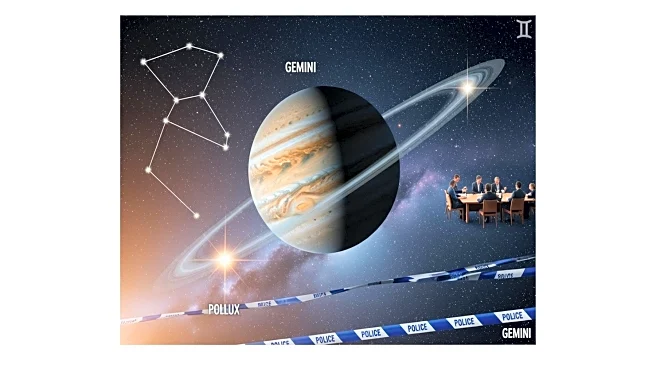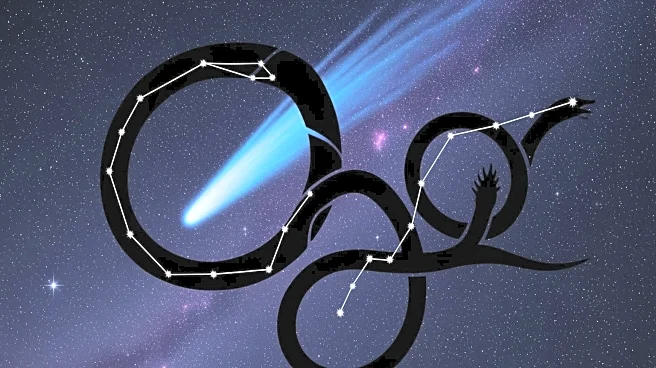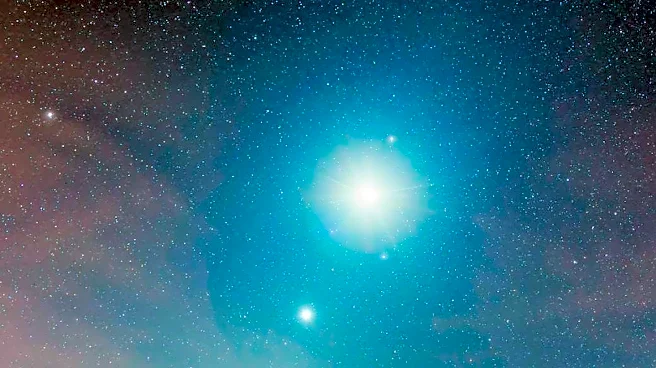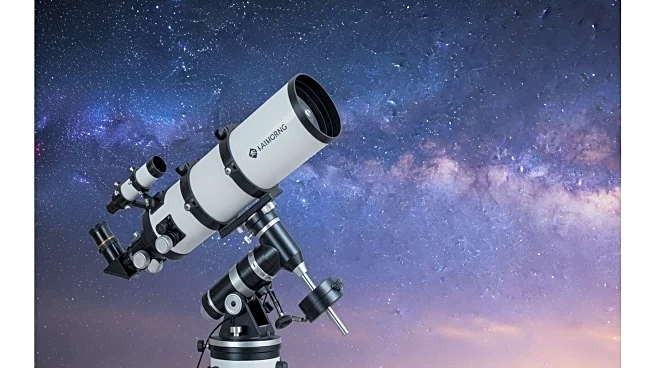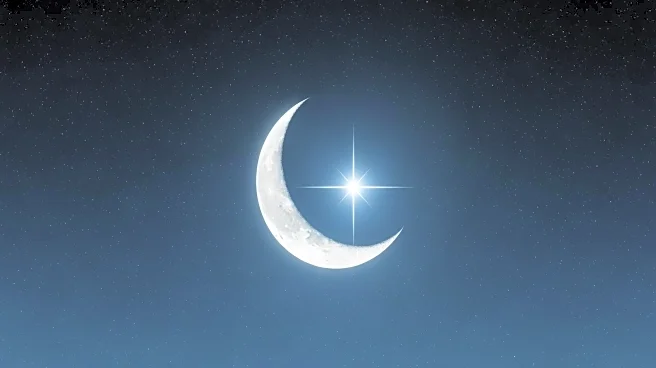What's Happening?
Jupiter is currently visible in the night sky, passing 7° south of the star Pollux in the Gemini constellation. This astronomical event is observable late at night, with Jupiter shining brightly at a visual
magnitude of -2.2. The planet is positioned to the lower right of the heads of the Gemini twins, Castor and Pollux. An occultation event involving Jupiter's moon Io is predicted, with Io disappearing into Jupiter's shadow and reappearing later. This celestial occurrence offers a unique opportunity for stargazers and astronomers to observe the dynamics of Jupiter and its moons.
Why It's Important?
The visibility of Jupiter and its interaction with Pollux provides an excellent opportunity for amateur astronomers and enthusiasts to engage with the night sky. Observing such events can enhance understanding of planetary movements and celestial mechanics. For the scientific community, these observations contribute to ongoing research and data collection about Jupiter's atmosphere and its moons. The event also highlights the accessibility of astronomy to the public, encouraging interest and education in space sciences.
What's Next?
Following this event, Jupiter will continue its journey across the night sky, offering more opportunities for observation. The predicted occultation of Io provides a specific time frame for enthusiasts to witness the moon's disappearance and reappearance. As Jupiter moves, astronomers will continue to track its path and study its interactions with other celestial bodies. Future events involving Jupiter and its moons will be anticipated by both professional and amateur astronomers.
Beyond the Headlines
The observation of Jupiter and its moons can inspire broader interest in space exploration and the study of our solar system. Such events can lead to increased public engagement with astronomy, potentially influencing educational programs and initiatives. The cultural significance of stargazing and celestial events can also foster a sense of wonder and curiosity about the universe.
